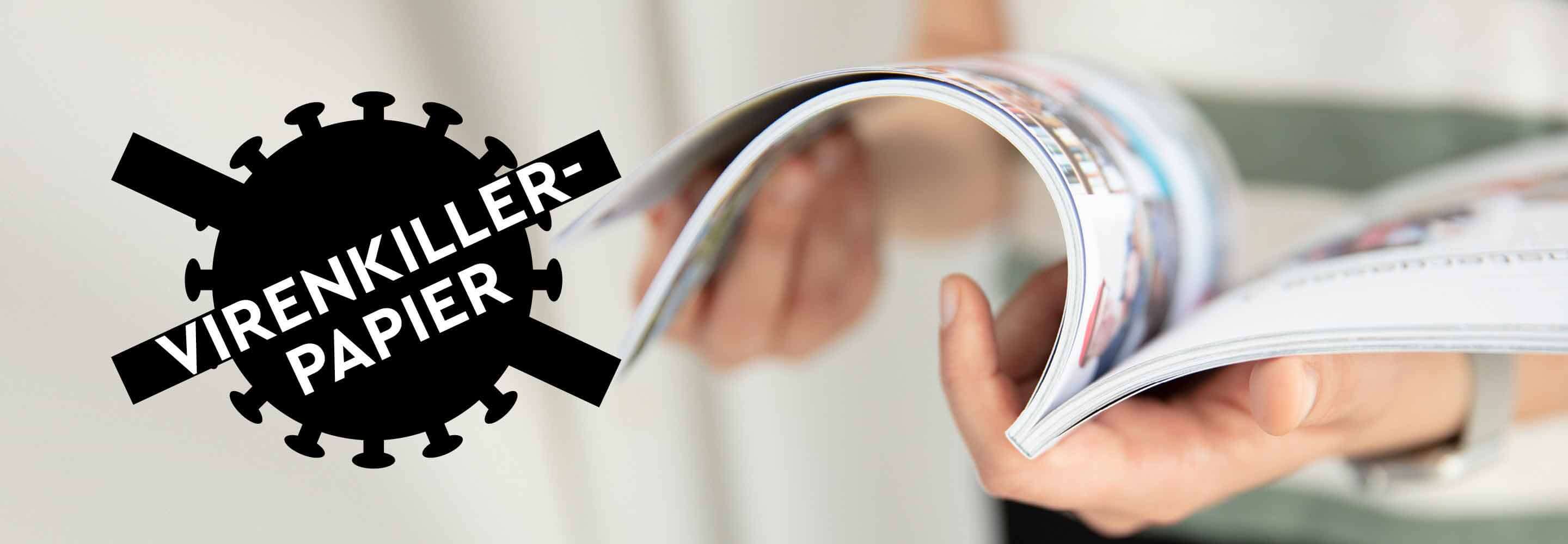

The packaging in the supermarket or the magazine in the doctor’s waiting room: in times of the coronavirus, we no longer like to touch everything. After all, printed matter collects all kinds of microbes in the course of its life.
Microbes are bacteria, fungi and viruses. Not all of them are harmful. The human body is also largely made up of microbes and would not be viable without them. However, there is a problem when it comes to viruses that are spreading epidemically and are still foreign to our bodies. Although viruses last relatively short on paper and cardboard, in the case of SARS-CoV-II they last up to 24 hours. Enough time for a transfer.
Germ killer instead of germ slingshot
This is a challenge for the printing industry in particular, as printed matter has a reputation for being a hotbed of germs and people no longer like to touch it. Magazines are not meant to be read once and thrown away, but pass through many hands and everyone leaves their mark on them. Other examples are menus, playing cards and, last but not least, packaging for food and hygiene products: These are also handled by various customers in the supermarket and end up in our kitchens and bathrooms.
In collaboration with the University Hospital Regensburg, the company Varcotec has now developed the antimicrobial dispersion coating Lock 3. He coats the paper with a special photocatalyst that deactivates microbes through the interaction of oxygen and light. Depending on the exposure to light, the effect kills up to 99.5 percent of microbes – and this also applies to viruses.
Harmless to health
But if the new varnish kills microbes, what about the body’s own microbes? Unlike disinfectants, Lock 3 does not work with aggressive chemicals, but is neutral for the skin climate. The photocatalytic effect cannot cause any damage to the human body and remains effective for over a year. Their health safety and effectiveness have now even been confirmed by the Fraunhofer Institute.
We spoke to a print shop that offers the virus-killer varnish: In principle, it can be used for any paper. However, it seems to be best suited for coated papers. We have not yet had any experience with this technology, but we find this topic extremely exciting – especially for packaging projects.